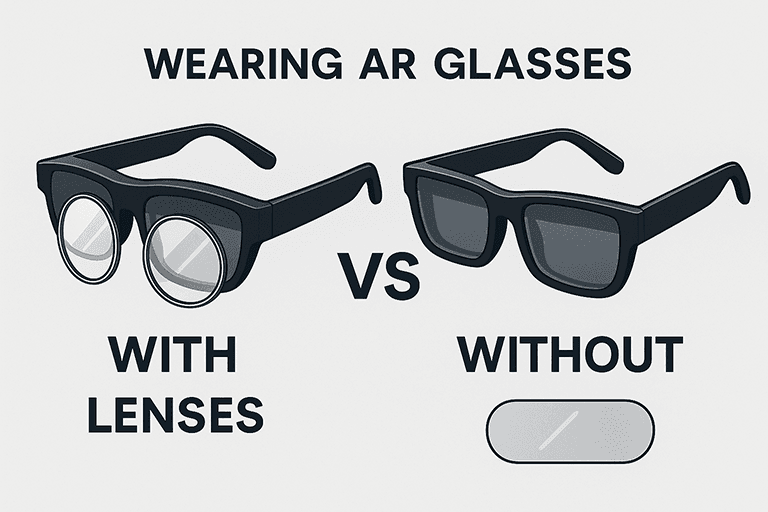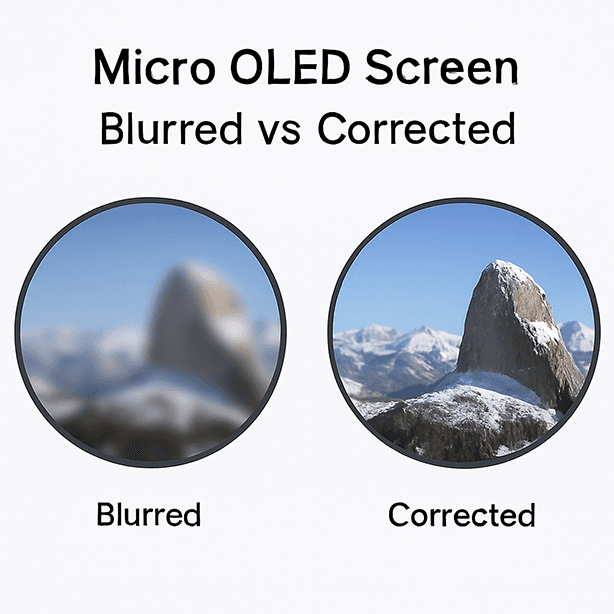Enjoy 5% OFF on all orders over $49 + FREE shipping! Use code: 202512AK5
🚀 AR glasses and prescription lenses: Why 2025 Is the Year They Matter
Table of Contents
Introduction
AR glasses prescription lenses have become a real game-changer in 2025. With emerging AR devices like the Real Air 2 Pro and Viture Luma Pro—now offering prescription-compatible designs—vision correction is finally built into wearable tech. It’s no longer just about clarity; it’s about comfort, usability, and the seamless adoption of AR/VR in everyday life.

Why AR Glasses Prescription Lenses Matter
AR glasses are only as good as the visuals they deliver. If you need vision correction, even the best micro‑OLED display is blurry without prescription lenses. That’s why models like the Xreallike the Xreal Air 2 Pro include removable RX inserts, offering a perfect fit for users who wear glasses.

Hot Devices of 2025 & Their RX Support
According to TechRadar, the Meta Quest 3 is ranked the best overall VR headset in 2025 for its mix of affordability, visuals, and mixed‑reality passthrough.
- Xreal Air 2 Pro: 1080p per eye, 120 Hz, ergonomic sunglasses form factor, and easy-to-fit prescription inserts.
- Viture Luma Pro / Beast: Future‑proof designs but currently lack built‑in RX options — though aftermarket lens adapters are starting to appear.
- Ray‑Ban Meta Wayfarer: Stylish prescription smart glasses that focus on audio/camera features over AR visuals.
Pro Tips for Your Vision & Comfort
If you use AR/VR for hours—whether gaming, watching movies, or remote work—don’t compromise: upgrade to prescription inserts like those from ANNKUTVR. No more squinting or fogging when wearing glasses under the headset. This tweak alone transforms the experience from OK to perfect.
How to Choose the Right AR Glasses with RX
| Factor | Why It Matters |
|---|---|
| Prescription Lens Support | Look for models with integrated or clip-in RX frames (Xreal, aftermarket for Viture). |
| Comfort & Fit | Lightweight frames (≈ 75 g for Air 2 Pro) and good optics from companies like Xreal ensure portability |
| Display Specs | Focus on OLED panels with ≥ 120 Hz refresh rate for smooth visuals. |
| Functionality | Pick what suits your lifestyle: AR display, audio, camera, or a mix. |
Current RX Trends in AR/VR
AllFocal Optics is launching retinal-focus nanophotonic lenses—possibly eliminating the need for RX in the next few years.
CES and AWE trends indicate rising consumer demand for prescription-capable glasses and integrated AI features .
- GSMA Intelligence notes that only about 5% of consumers currently own an XR headset, but adoption is expected to ramp up rapidly post‑2025 as AR smart glasses become more ergonomic and prescription‑friendly

Conclusion
AR glasses prescription lenses are no longer niche—they’re essential if you wear glasses. My go-to picks are the Xreal Air 2 Pro for its display and RX fit, plus ANNKUTVR inserts for any headset. Expect more brands to include RX support as standard in 2026.
